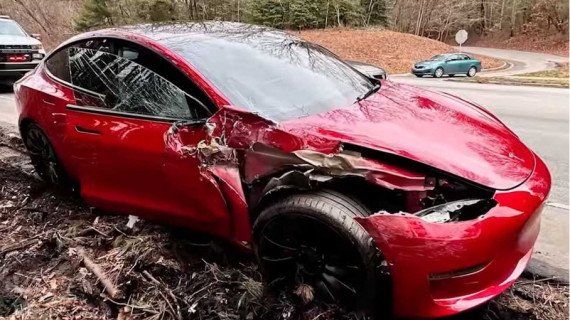At this time, every car manufacturer plus hundreds of startups are working on developing artificial intelligence for driving automation. This should enable communication with the car’s passengers, sensing and anticipating the behavior of other vehicles and road users, communicating with the cloud and planning a safe and fast journey. I will write later about the investments made to achieve this goal.
The development of car automation became visible when Google was the first to start a project in 2009. The activities that technology companies and the automotive industry carry out start from two different visions of the desired result.
Maintain the existing traffic system
The first view assumes that automation is a gradual process that will result in drivers ability to transfer control of the vehicle in a safe manner. It is provisionally assumed that a driver will always be present. That is why taking over control is no problem under specific conditions, such as bad weather and crowded streets. Tesla, an outspoken supporter of this vision, has therefore been talking about its autopilot for years. This came under heavy criticism because the number of functions that were automated was limited. Partly because of this, the so-called autopilot could only be used on a limited number of roads and under favorable conditions.
Most established automotive manufacturers primarily have in mind the higher segment of automobiles and announce they will only make relatively cheaper models suitable for this purpose at a later stage. Maintaining the current traffic system is paramount. The car industry wants to avoid at all costs that people will eventually stop buying cars and limit themselves to ride-hailing in autonomous vehicles.
Moving towards another traffic system
The latter is exactly the intention of the companies that adhere to the second vision. These primarily include non-traditional automotive companies, with Google (later Alphabet) in the lead. What they had in mind from the start was to achieve SAE level 4 and, in the long term, SAE 5 level, cars that can drive safely on the road without the presence of a driver. Companies belonging to this group advocate a completely new transport system. In their opinion, safe driving at SAE level 3 is impossible if the driver is not constantly paying attention. They believe that in the event of a 'disengagement signal', taking control of the car takes too much time and will result in dangerous situations. In addition to Google, Uber (in collaboration with Volvo) also belonged to this group, but now appears to have dropped out. This also applies to Ford and Volkswagen. General Motors is betting on two horses and aims to maintain accreditation at SAE level 4 with its subsidiary Cruise, although Alphabet's subsidiary Waymo has by far the best cards.
Important message for the readers
From next year on, the frequency of my articles about the quality of our living environment will decrease. I admit to an old love: Music. In my new website (in Dutch) I write about why we love music, richly provided with examples. Maybe you will like it. Follow the link below to have a look.





